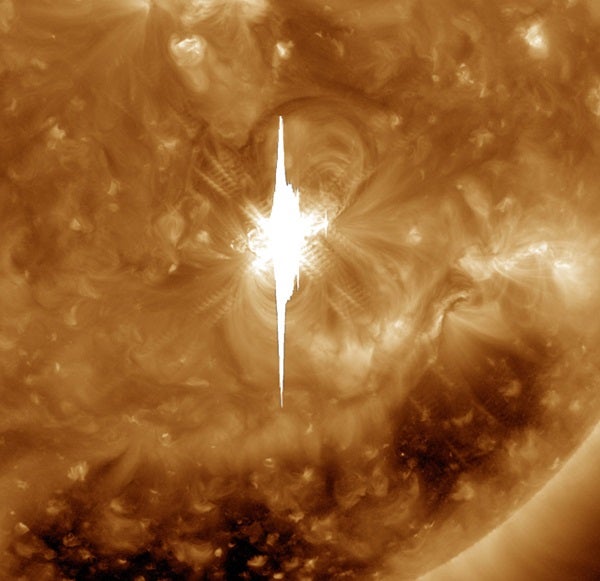Looks like the new solar cycle is beginning to ramp up. The Sun emitted its first X-class flare in more than 4 years on February 14 at 8:56 p.m. EST.
X-class flares are the most powerful of all solar events that can trigger radio blackouts and long-lasting radiation storms.
Active region 1158 let loose with an X2.2, the largest flare since Decemeber 2006 and the biggest flare so far in Solar Cycle 24. Active region 1158 is in the southern hemisphere, which has been lagging the north in activity but now leads in big flares.
This particular flare comes on the heels of a few M-class and several C-class flares over the past few days.
The particle cloud produced by the Valentine’s Day event appears to be rather weak and is not expected to produce any strong effects at Earth other than perhaps some beautiful aurorae in the high northern and southern latitudes on February 17.










